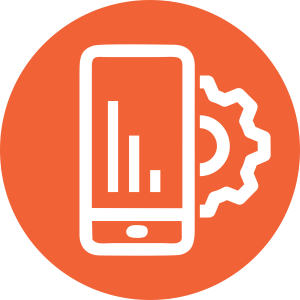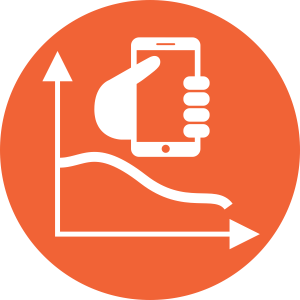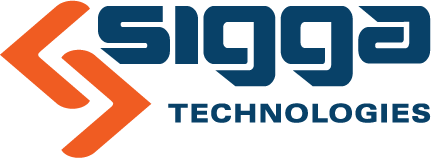The Best Mobile Maintenance Solutions for SAP EAM
July 27, 2021Is your mobilemaintenancesolution forSAPEAMperformingwell?Are you seeing the productivityand cost savingsyou expected?Is itfullyused by the technicians?Is it costly to maintain?
In this article, we’ll explore the commonshortcomingsof legacySAP EAM work order mobile apps anddefine what to consider inupgrading to a modern-daymobile maintenancesolution.
>Why Consider Upgrading your Mobile Maintenance Solution?
EnterpriseAssetManagement(EAM)with SAPis a many-layered and time-consumingsetof activitiesripe formobiledigital transformation with today’s technologies.If you have already deployed a mobile solution, you already recognize the benefits ofkeeping data digital with mobile devices.
With that being said,thereis likelyroom to improve. Not all mobile solutionsare the same. To do mobile right, youneed to leverage today’s technologies andproven productivity features.Legacyor custom-builtSAP EAM work order mobile appslikelyhave gaps that inhibittheir adoption and active useresultinginalost opportunity tocompletelystreamline processesand optimize resources.
Giventhelabor shortagechallengesandincreasingpressureson operational budgets, it is time to considerupgrading to athird-party,mobile maintenancesolution.Today’sproven mobiletechnologies are easier and lower cost to implement,they canberapidlyscaledacross enterprise organizationsandresultin a higherproductivityimpactforquick ROI.From a cost-to-value standpoint, there are few valid arguments against consideration.
Common Challenges in Mobile Maintenance Solutionsfor SAP EAM
It’s not always easy to do mobile right.As McKinsey notesin theirwhitepaper,ASmarter Way to DigitizeMaintenance and Reliability,“When companies getall ofthe requirements right, the results can be impressive. Leading players…haveincreased profitability by 4 to 10 percent in some organizations. But these lighthouse examples are the exception rather than rule. Many companies that have implemented digital maintenance and reliability solutions have seen little measurable impact.”
Many issues can play into digital transformation failure including lack of vision or stakeholder buy-in, poor training and technology implementation issues (including unique challenges of mobile solutions). Here’s a few mobile challenges worthy of pursuing an upgrade to a newer solution to avoid:
> PerformanceIssues
PerformanceIssues
- Frequent app crashes
- Poor app load time
- Slow data exchange
- High data latency
- Lack of access to databy userswhen offline
- Datasync processdisruptstheuse of the mobile
Fortunately, there are mobileEAMsolutions that address the issues noted aboveincluding providinghigh-performance integration with SAP. StandardSAP integrations used by most software providers and in-house IT teamstend to parse too much information, leading to poor performance and data loss.The performance of the integration with SAP can limitthe number of users and thescalingofthe mobile solution across locations.
In addition,Native mobile apps provide higher performance for a more efficient and responsive user experience as they are able to take full advantage of the speed and memory of the mobile device.
> Low App Adoption by Users
Low App Adoption by Users
A custom-built legacy solution likely has a unique user interface (UI) which can be challenging or non-intuitive to a new user such as a contractor. A complicated UI impedes app use, interrupting workflows and increasing the potential for errors and delays. In other words—if field workers are having difficulty navigating the app, they will likely use workarounds, which, unfortunately, impacts the entire team’s performance.
A native app is designed for the mobile device operating system thus works as the user expects based on their own experiences with their personal device. Therefore, an app designed especially for an Apple or Android mobile device will shorten the learning curve and increases the user’s interactions with the app. Native mobile apps can also easily access the device features (camera, video, GPS etc.) and memory. For example, complete manuals—not just the parts of the manuals related to the day’s orders—can be downloaded to the mobile device for offline availability via the app. This is a critical function should a technician find a new issue to fix in locations with poor connectivity.
> High Costs to Maintain the App
High Costs to Maintain the App
Early mobileEAMsolutions lack the agility and flexibility ofcurrent solutions. Theyoften require an extra layer of IT tomaintain the software overtime,adding additional costs and complexitieswithoutaddingvalue.For example,legacyappsneed constant updating and tweaking tofix bugs, align with mobile operating system (OS) changesandtokeep them secure.To make changeswouldrequiredevelopers tocustomizethe appwhichmight come as an outside expense.Third-partymobile maintenancesolutionsaremanaged by theproviderand aremaintainedforbugs, OS changes and security.For a deeper comparison, readEnterprise Industrial Software: Ready-made vs. In-house Development.
> App DesignDoesn’tFullyAddress theReal Processes
App DesignDoesn’tFullyAddress theReal Processes
If the legacy SAP EAM work order mobile app simply digitized the paper workflows or was designed by generalists, it likely has shortcomings in covering the breadth of maintenance processes. It also likely misses the opportunity to take full advantage of the digital possibilities that would require a new digital workflow approach.
McKinsey further commented in the above-referenced article, “While the overriding aim of digital work management (DWM) is to reduce waste and address pain points for the business, that won’t happen if adoption is poor. Therefore,successful systems must also make life easier for users, such as maintenance and operations staff or external contractors. That requires a good understanding of their working practices, challenges and pain points.”
A third-party, proven mobile EAM app will overcome most usability issues with new mobile workflows designed by knowledgeable experts in the function and tested for years with real-world use.
Doing Mobile Right
McKinsey identified three factors that determined success:
- “Companies take a holistic view of these new tools, building digital technologies into a clearly defined vision for the future of the maintenance and reliability function.
- They focus on two domains that have proved to be truly effective…: predictive maintenance (PdM) and digital work management (DWM). [McKinsey defines DWM as: workflow digitization, mobileexecution, andreal-time performance management.]
- Finally, they support their use of digital tools by ensuring the necessary enablers are in place, including optimized workflows, a robust data infrastructure, and the capabilities of their personnel.”
As a keycomponent of digital work management,take the time to evaluate your current mobile implementation and consider the options to do mobile right. For moredetails on key criteria, read our whitepaper,Doing Mobile the Right Way for Plant Maintenance by Bob Dieterle.
Upgrade andExperience the Benefits
It is time to upgrade your legacy SAP EAM work order app to a third-party-proven mobile maintenance solution! Some of the benefits you can expect:
- >Greater app adoption.Intuitive, responsive UI is easy to use, improving adoption across the board.
- Lowerhard costs.If you haven’t gonepaperlessin maintenance,A mobile EAM solutioncan significantlyreduce paper and printing costs.
- Increase wrench time.Workers spend moretimedoing what they do bestand less time managing the admin requirements of the job.As a result,you canoptimize your resources, reduceovertime,andreduceuse of contractors.
- >Better resource allocation.Real-time data enables timely responses and better business decisions, increasing agility and optimizing efforts through every process.
- >Avoid errorsand increasesafety.Field workers have access to all the information they need to get the job done rightwhether they are online or offline.
- >Real-time data visibility.Status of work orders, notifications, documentation, and communication areupdated in SAP real-time.
- >Future-proof technology. Worry less about your tech and focus more on the work at hand, knowing your mobile solution is built to grow with you.
Get Help from the SAP EAM Experts
Sigga has been helping companies to close gaps in SAP EAM functionality for 20 years. It takes dedication and ongoing development to sustain world-class mobile experiences. As a result, Sigga Mobile EAM is the leading mobilemaintenancesolutionfor SAP EAM environments. As a natively designed application, our Mobile EAM app benefits from the OS-provider continued innovations and security. We have also developed our own SAP-certified integration technology to provide higher performance to support the data exchange volumes required for maintenance workflows of large, Enterprise organizations with hundreds of mobile users.
To extend the digital workmanagement,ourSigga Planning & Scheduling solutionreplaces excel spreadsheet workbyautomating many of the routine steps in creating the daily, weekly or monthlyschedules.Plus,Sigga Warehouse & Inventoryextendsthemobile, digital transformationto adjacent functions formore productivity enhancements.
{{cta(‘a71562aa-80aa-49c0-8689-ad6e788709fd’)}}
See how our solutions have been specifically designed to complement your SAPEAMinvestment.
